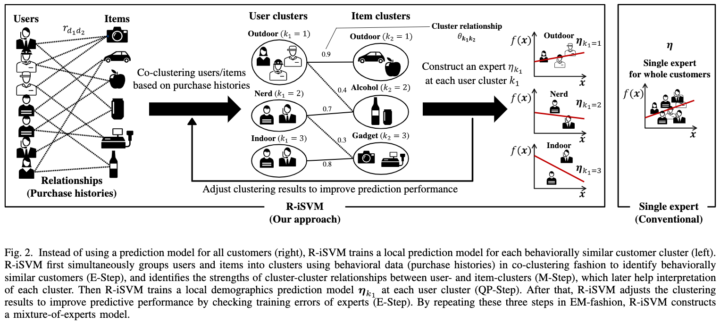
Given a collection of basic customer demographics (e.g., age and gender) and their behavioral data (e.g., item purchase histories), how can we predict sensitive demographics (e.g., income and occupation) that not every customer makes available? This demographics prediction problem is modeled as a classification task in which a customer’s sensitive demographic y is predicted from his feature vector x.
So far, two lines of work have tried to produce a “good” feature vector x from the customer’s behavioral data: (1) application-specific feature engineering using behavioral data and (2) representation learning (such as singular value decomposition or neuralembedding) on behavioral data. Although these approaches successfully improve the predictive performance, (1) designing a good feature requires domain experts to make a great effort and (2) features obtained from representation learning are hard to interpret.
To overcome these problems, we present a Relational Infinite Support Vector Machine (R-iSVM), a mixture-of-experts model that can leverage behavioral data. Instead of augmenting the feature vectors of customers, R-iSVM uses behavioral data to find out behaviorally similar customerclusters and constructs a local prediction model at each customer cluster. In doing so, R-iSVM successfully improves the predictive performance withoutrequiring application-specific feature designing and hard-to-interpret representations.
Experimental results on three real-world datasets demonstrate the predictive performance and interpretability of R-iSVM. Furthermore, R-iSVM can co-exist with previous demographics prediction methods to further improve their predictive performance.